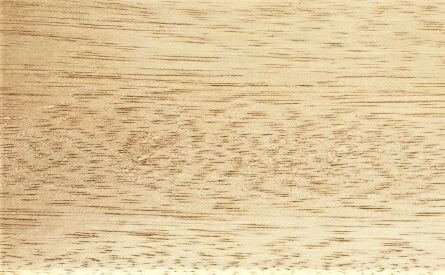Ramon
Breadnut / Brosimum alicastrum

Local Names
Distribution & Tree
Wood Appearance
Ramon is a yellowish white or beige without strong demarcation between sapwood and heartwood. It can have reddish streaks in its heartwood. With a fine to medium texture, the wood has a slightly interlocked grain. It has medium to high gloss and sometimes overlapping arches, stripes, and bands with a golden gleam. On international markets, ramon is a considered a substitute for ramin (Gonystylus bancanus), is now listed on CITES Appendix II as an endangered species.
Processing Properties
Strength & Durability
Wood Uses
Ecological & Social Importance
The tree was important to the Mayan people who boiled or toasted and consumed its seed, which is high in starch, fat, vitamins A and C, and mineral content, prompting its appellation as Mayanut or breadnut. It’s called iximche in some Mayan languages, meaning literally “maize tree,” reflecting its importance especially in lean times. The ancient Mayans cultivated it enthusiastically and it is still found in high concentrations around ancient Mayan settlements. One tree can yield around 29 kg of seeds and some forests have up to 125 trees per hectare. Ramon’s sap is edible with a pleasant taste and can yield a nutritious vegetable milk. The leaves and sap are used to stimulate breast milk production. The sap is rich in alkaloids – strong chemical substances which can be effective in fighting illnesses. In the Amazon, sweet amapá (Brosimum parinarioides) is traditionally used to treat respiratory conditions and gastritis and to promote the growth of scar tissue.
Ramon’s leaves remain green through the dry season and form an important source of forage for cattle, pigs and chicken. They contain around 13% protein, rich in the amino acids lysine, arginine, tryptophan and valine. Cows fed ramon leaves increased milk production by 15-20%.
| Reference Species | ||||
| Technical Characteristics | Ramon | Hickory (Shagbark) | Sugar Maple | |
| Density | kg/m3 | 849 | 800 | 710 |
| Janka Hardness | kgf | 804 | 853 | 658 |
| Bending Stiffness (Modulus of Elasticity) | GPa | 16.4 | 14.9 | 12.6 |
| Bending Strength (Modulus of Rupture) | MPa | 96.3 | 139.3 | 109.0 |
| Crushing Strength | MPa | 64.0 | 63.5 | 54.0 |
| Shrinkage, Radial | % | 5.8% | 7.0% | 4.8% |
| Shrinkage, Tangential | % | 8.2% | 10.5% | 9.9% |
| Shrinkage, Volumetric | % | 12.2% | 16.7% | 14.7% |
| T/R Ratio | 1.4 | 1.5 | 2.1 | |
| Values determined at 12% humidity | ||||
|---|---|---|---|---|
DENSITY
JANKA HARDNESS
BENDING STIFFNESS
BENDING STRENGTH
CRUSHING STRENGTH
SHRINKAGE
Values are for reference only and cannot be guaranteed. Wood is a natural material and physical and mechanical properties may vary depending on age, genetics, and other factors. We encourage customers to consult the references provided in the bibliography. For further explanations of wood’s key technical characteristics, an excellent resource is the Wood Database with articles on Density (average dried weight); Janka hardness; Elastic Modulus; Rupture Modulus; Crushing Strength; Radial, Tangential and Volumetric Shrinkage.






